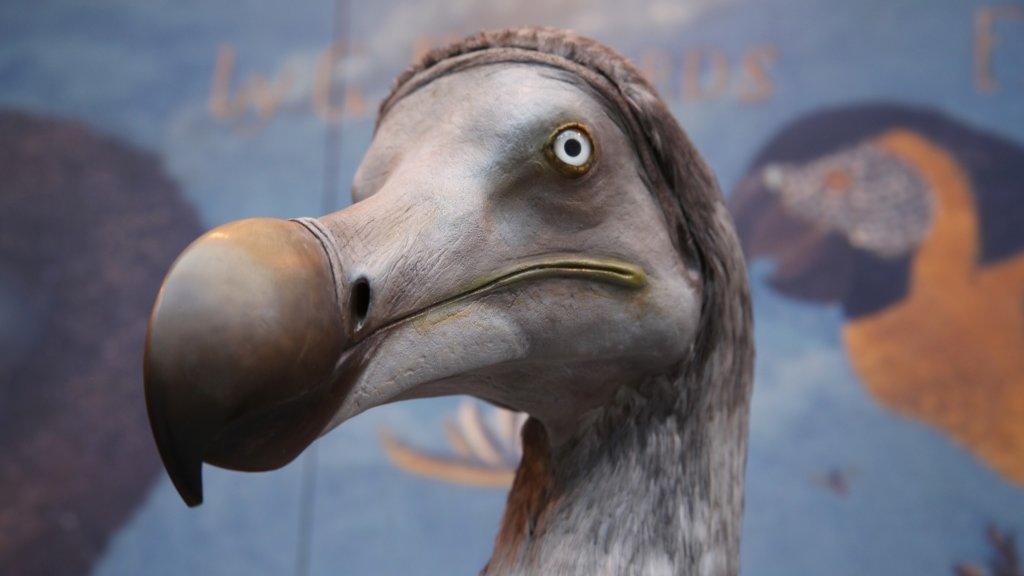Oxford University Museum of Natural History gives exhibits fresh look
- Published
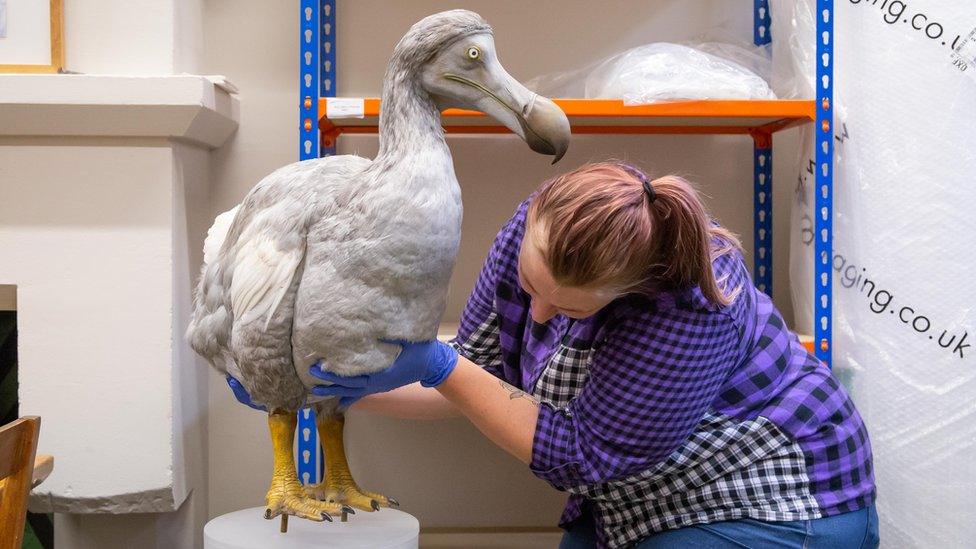
The dodo was a flightless bird, first encountered by Europeans in the late 16th Century in Mauritius
Dinosaurs and dodos may have long been extinct but Oxford University Museum of Natural History is giving their remains a new lease of life.
As part of plans to change the museum's displays for the first time in almost 20 years, the specimens are being temporarily removed as new conservation cabinets are fitted.
The museum, founded in 1860, attracts more than 750,000 visitors a year.
Mangers said the refurbishment would "safeguard our heritage".
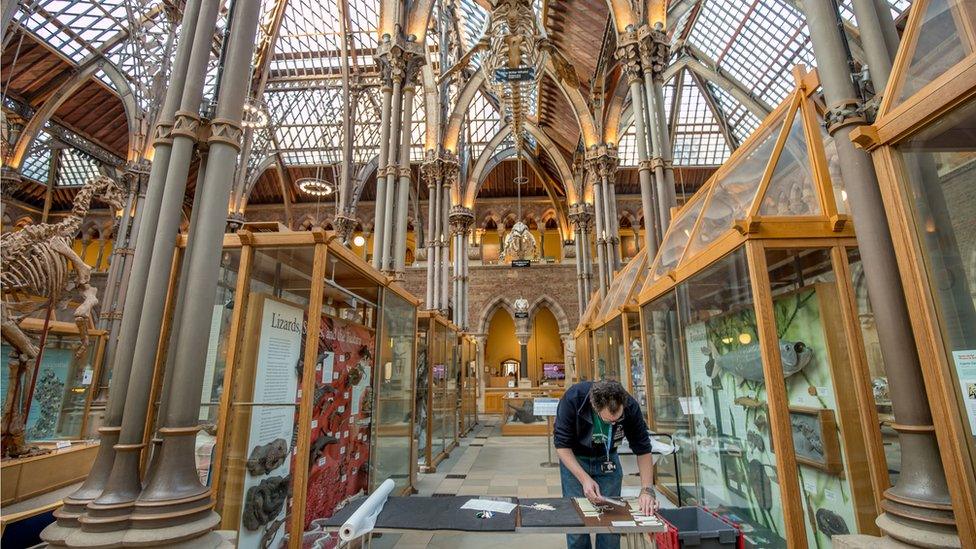
The old display cabinets will be removed to make way for new conservation-grade showcases
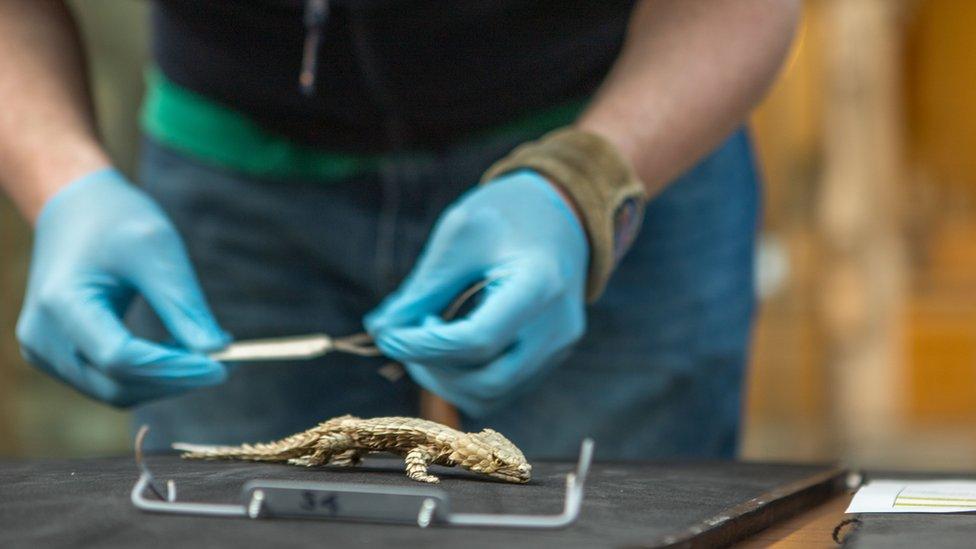
All of the specimens have been handled carefully and stored safely ahead of the new displays
The new display, which will include presentations of the "diversity of life and address the importance and fragility of biodiversity and human impact on the environment", will be constructed this year.
The museum said the cabinet changes were part of longer term plans to "transform" the displays in its main court.
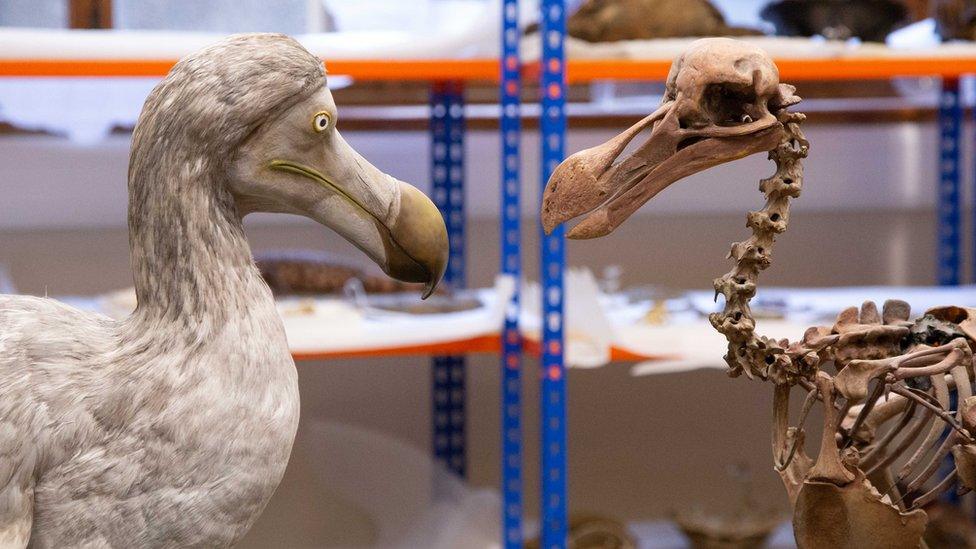
The Oxford Dodo is the most iconic specimen held by the museum and is the only surviving dodo soft tissue remains in the world
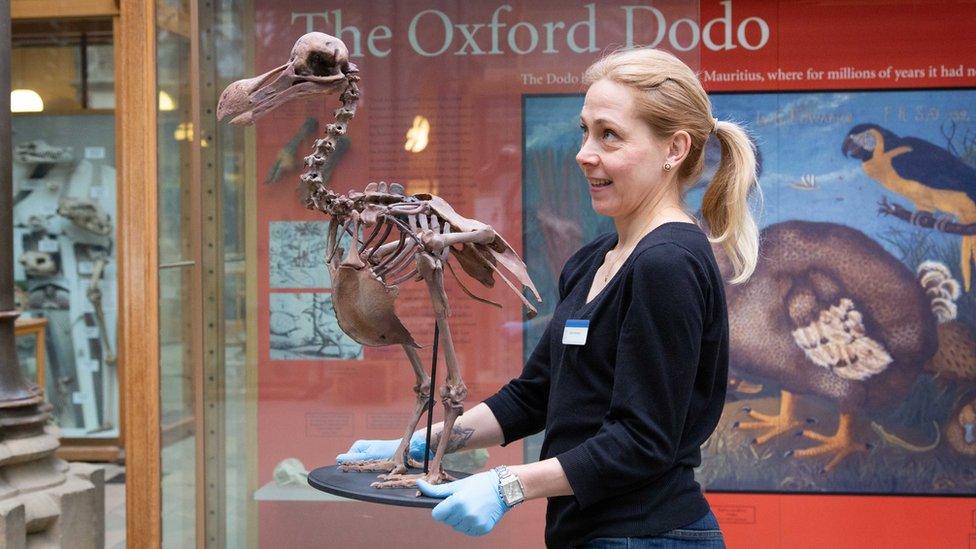
Easy does it: The exhibits are being moved into new conservation cabinets
Museum director Professor Paul Smith said a grant meant they were able to purchase the cabinets which "meet today's conservation and display standards".
"These are exciting changes for the museum, as we look to provide our large and varied audiences with inspiring, scientifically rigorous and aesthetically beautiful presentations of the natural world," he said.
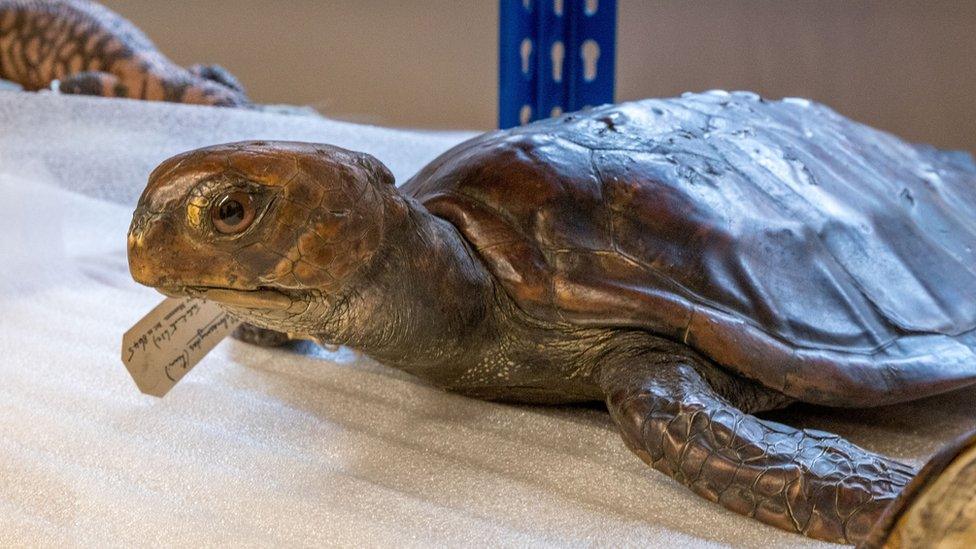
The new cases will better protect and preserve the specimens on display by providing better environmental conditions than the current ones
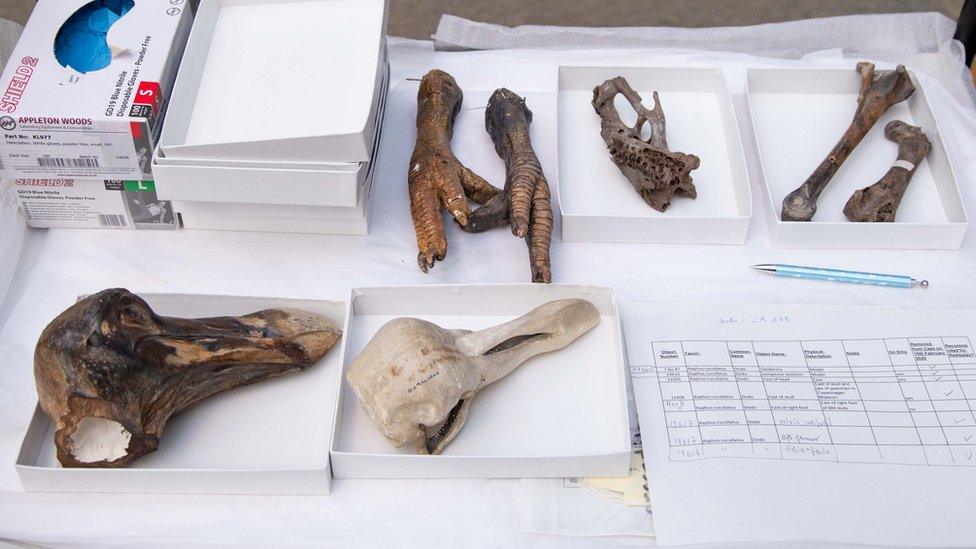
The new displays have given staff a chance to painstakingly clean the artefacts
Founded in 1860 as the centre for scientific study at Oxford University, the museum now holds the university's internationally significant collections of entomological, geological and zoological specimens.
It is housed in a pre-Raphaelite inspired example of neo-Gothic architecture and underwent a major £2m refurbishment project to fix its leaking roof.
However, after the roof was replaced in 2016 sunlight started causing "rapid and irreversible damage to specimens", which resulted in a reflective film being added to its glass tiles.
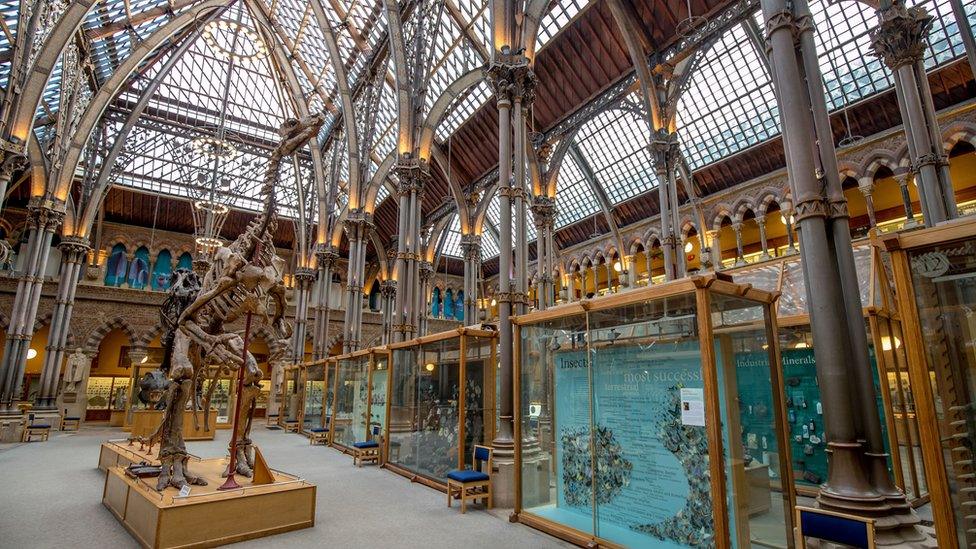
The museum was closed for 14 months in 2014 as more than 8,500 Victorian glass tiles on its roof were individually removed and resealed
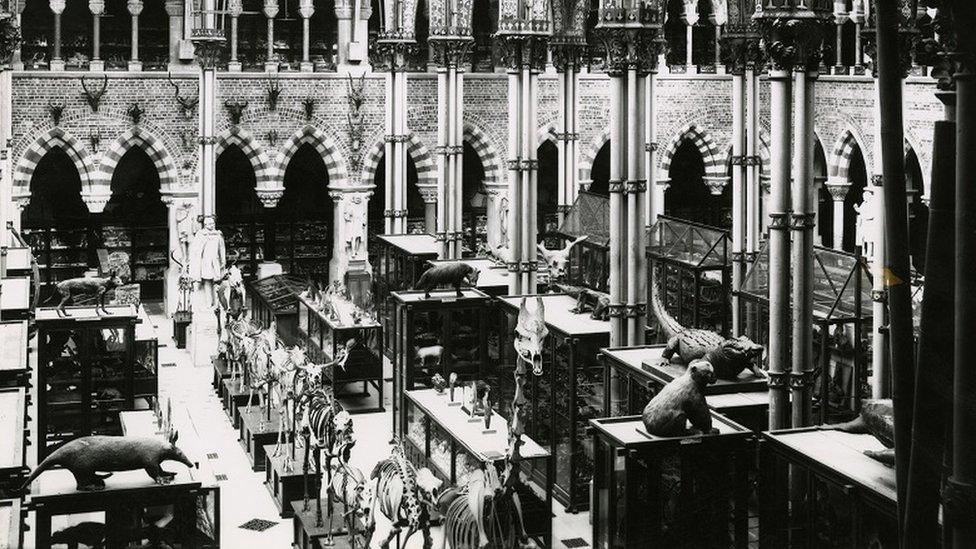
The museum's main court pictured in 1890, 30 years after it first opened
The museum will remain open to visitors as normal throughout the changes this year.
- Published26 June 2019
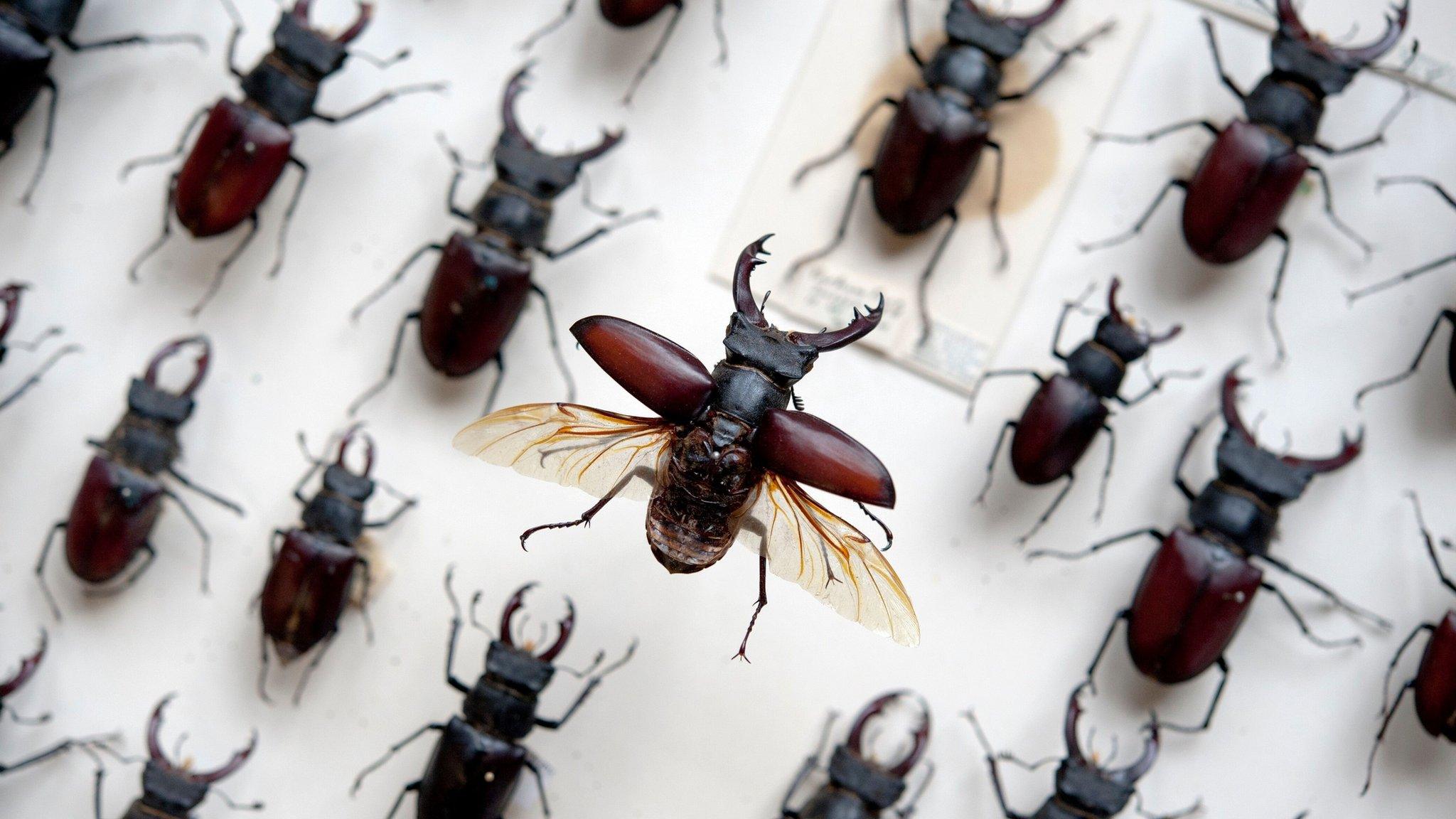
- Published7 August 2018
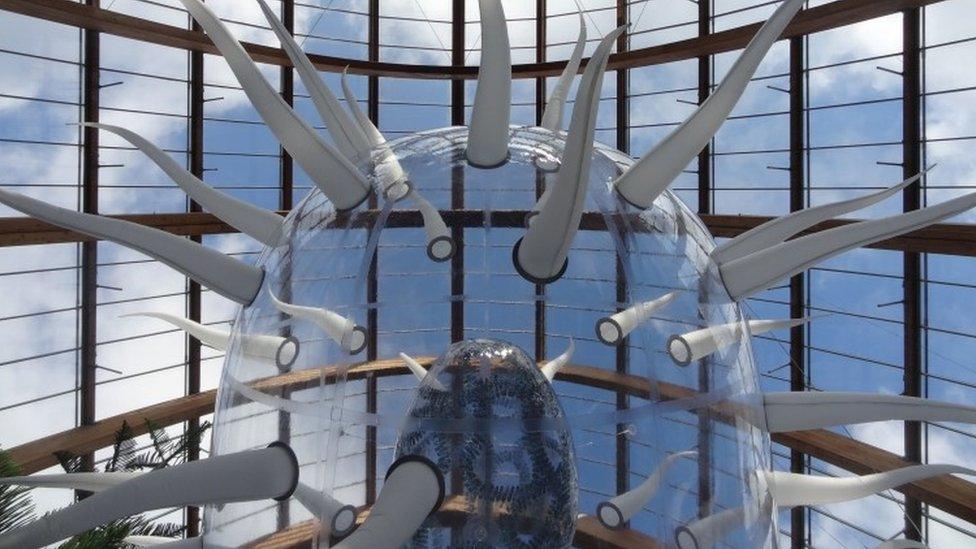
- Published20 April 2018
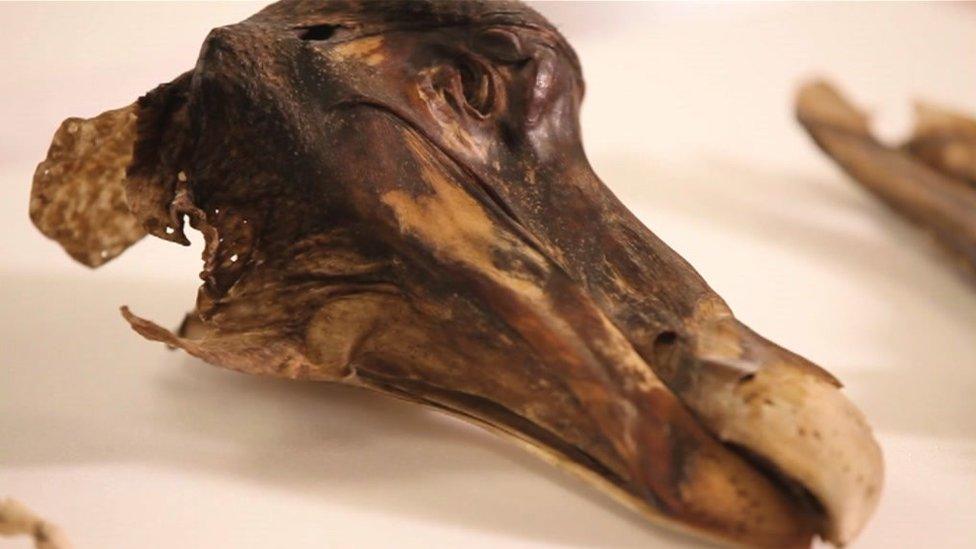
- Published16 February 2014
